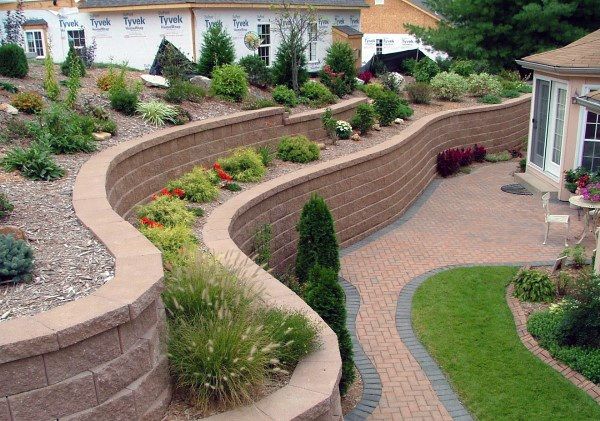Retaining Wall: What You Must Know About Its Design and Structure

Retaining walls are used to maintain soil on both sides so one can maintain it at multiple stages. Retaining walls in Minnetonka, MN, are made of numerous pieces, and the design ideas for these structural components depend on various factors such as situations, materials, and construction techniques.
Furthermore, the primary consideration while designing would be the dimensions of the ground-level difference that the wall will facilitate in the future. Read on to know more.
Component Dimensions for Retaining Walls
The range of its dimensions establishes the following types of retaining walls:
- Curbs
These are the most uncomplicated independent retaining infrastructure. The decision is based on whether or not you require a gutter on the side of the curb. These are primarily used for adjusting the grade level of fewer than 2 feet.
- Retaining Walls That Aren’t Too Tall
These vertical walls are generally up to 10 feet tall, built on uniform concrete wall, strengthening and transverse stance reinforcing.
These are constructed to withstand forces such as lateral shear or bending and the vertical weights of the wall, footholds, and earth fill.
When the base of the footing is at an appropriate space below the base on the lower side of the wall and has a poor lateral passive resistance, you need to add shear keys just on the base of the footing to enhance resistance posed by sliding.
- Tall Retaining Walls
The use of simple construction becomes challenging as the wall height rises. The overturning increases proportionally to the increase in the height of the wall. The thickness of the tapering fence can be one thing utilized for tall retaining walls.
This allows a good cross-section to be developed for the base’s high bending load without excessive concrete.
However, as the wall grows taller, it is frequently essential to consider various bracing techniques.
Design Considerations for Retaining Walls
Following is a list of parameters that must be taken into consideration when one is designing a free-standing retaining wall:
- the stability of soil where one will build the wall;
- the wall’s own stable structure strength;
- the impact on adjacent structures caused by wall construction.
The movement level that a wall experience determines the intensity of the earth pressure that applies to the wall.
Regarding free-standing retaining walls, it’s frequently assumed that sufficiency of outward drift enables active (minimum) soil pressures to emerge.
Furthermore, while designing following points should be kept in mind according to Minnetonka laws:
- Determine the placement of the retaining wall.
- Determine the height and shape of the retaining wall
- Determine the structural needs
- Determine the overall wall structure.
Checklist for Materials and Location Before Starting Work
A strengthened retaining wall necessitates careful planning and placement on the job site.
- Examine Your Materials
Check the color, style, and setback of the block supplied to ensure it matches the AB unit stated on the approved designs.
Check the strength, weight, roll size, strength direction, and manufacturer of the geogrid delivered to ensure it matches the grid stated on the engineering designs.
- Storage and Delivery
Create a storage room for the block, geogrid, and wall rock. Keep the geogrid dry, protected, and tidy by storing the bricks on wood pallets.
Retaining walls in Minnetonka, MN, are self-contained constructions or part of a larger construction project, such as a building. Planning clearance is required if the wall is above 3 feet high near a road or pathway or over 6.5 feet high elsewhere.
Building regulations may not be required for independent, free-standing retaining walls; however, all constructions must be highly durable and well-tended.